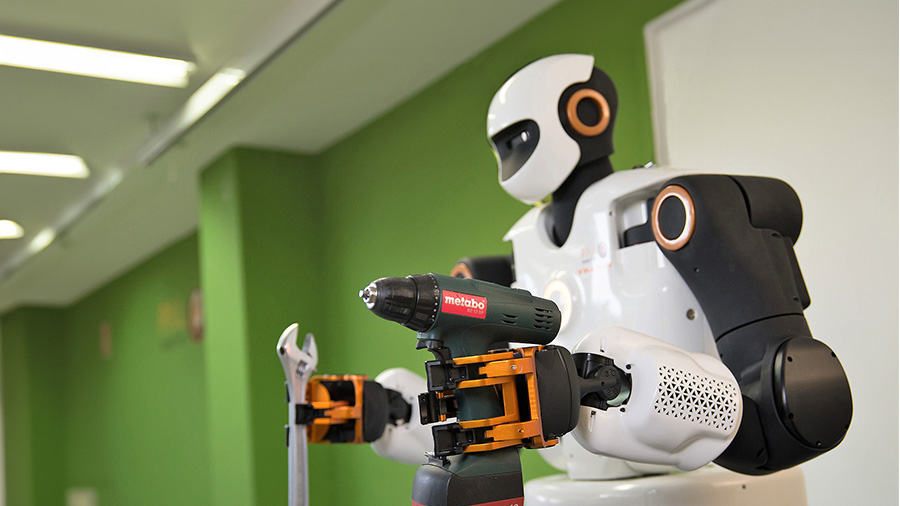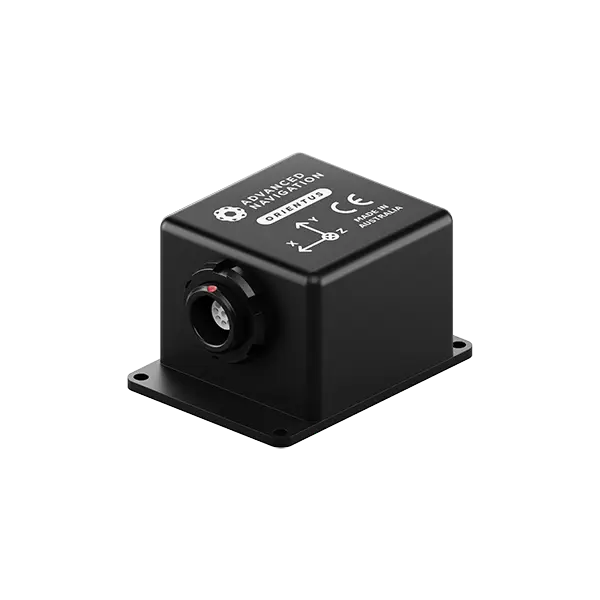Case Study


Published on:
Founded in 2004, PAL Robotics is a trailblazer in the field of robotics, having developed the first fully autonomous humanoid biped robot in Europe. With over 20 years of experience in R&D, the company has made significant contributions in the design and manufacturing of customizable, tailor-made robotic solutions used for research, logistics, retail and social applications by various companies, institutions and labs.
In a world increasingly captivated by the wonders of generative artificial intelligence (AI), it’s easy to overlook the remarkable strides being made in the field of robotics. Thanks to recent innovations in machine learning and sensor technology, robots are gaining an unprecedented level of autonomy and adaptability of robots. These advances enable robots to not only perceive their surroundings with remarkable precision but also to make informed decisions and learn from their experiences in real time.
Among the sectors reaping the benefits of these technological leaps is the development of humanoid robots. Designed to replicate the human form and to mimic human motion and behavior, these robots have long captured the imagination. Once confined to Hollywood and the realms of science fiction, they are rapidly becoming a reality, evolving from early prototypes to commercial models capable of walking through rough terrain, navigating around obstacles with a remarkable degree of independence.
To date, the growth in the robotics industry has been staggering, with an estimated market value of 3.9 billion USD. This figure reflects a remarkable compound annual growth rate (CAGR) of 52.1% year-on-year from 2017, which is expected to continue up to the end of the decade.1 By 2030, all robots designed for industrial purposes are projected to be 41 billion USD2, a testament to the value these technologies could create. It’s a market PAL Robotics anticipates will dominate the next century.
“We’re on the cusp of a technological revolution, where humanoid robots can help liberate us from tedious and mundane tasks. This will catalyze a future where robots and humans work alongside each other on endeavors that will further society and improve our quality of life.”
says Luca Marchionni, Chief Technology Officer at PAL Robotics.
A leading player in the industry, PAL Robotics recently made significant progress. Their flagship humanoid robots, TALOS and Kangaroo, are known for their ability to perform intricate movements and maintain balance in complex environments. To enable this, they partnered with Advanced Navigation by integrating the Orientus IMU/AHRS (inertial measurement unit/attitude and heading reference system) into their humanoid robots.
TALOS, developed in 2017, is a bipedal humanoid robot, operating on the ROS (Robot Operating System) platform. Designed to navigate challenging terrains and complex industrial environments, TALOS boasts an impressive payload capacity of up to 6 kg on each extended arm. This enables TALOS to handle heavy tools, making the robot ideal for tasks such as drilling and riveting in industrial settings. TALOS is currently being used by several institutions for research in areas such as AI and machine learning, multi-contact motion planning and dynamic walking.
Kangaroo, a platform which is also commercially available, is PAL Robotics’ next-generation humanoid robot following in TALOS’s footsteps. According to Marchionni, Kangaroo is specially designed with lightweight materials and low moving inertia in its legs, enabling it to perform highly dynamic motions, such as jumping and running. The robot features an innovative actuation system, which allows for leg extension and contraction using a single motor. This design streamlines the mechanical structure, making Kangaroo more robust than other robots that require multiple actuators for similar actions.
“When designing TALOS and Kangaroo, our goal was to develop cutting-edge robotics suitable for complex industrial scenarios and that could also collaborate with people to solve everyday problems.”
says Marchionni.
Kangaroo is a biped research platform created to study advanced motor technology.
Given the intricate balance and complexity inherent to the human body, it is extraordinarily difficult to endow robots with human-like balance, stability and motion. Additionally, the need for humanoid robots to independently navigate their environment, as opposed to traditional industrial robots fixed in place, adds to the complexity. These robots must continuously adapt to terrain changes and their own shifting centre of gravity. This includes not only controlling concurrently a large number of degrees of freedom but also managing interaction forces with the ground and the surrounding environment.
Identifying the robot’s body position and orientation accurately is the first challenge in this complex undertaking. This involves integrating data from various sources, including acceleration and angular velocity, measurements of the robot’s joint position and speed, and an understanding of the contact states with the ground. This is no small feat. Inconsistencies or errors must then also be removed before the data sets can be fused with the robot’s Whole-Body Torque Control algorithm.
To effectively navigate their environment and avoid toppling over during operation, all humanoid robots must incorporate a high performance IMU/AHRS sensor, allowing them to continuously maintain real-time balance and stability. PAL Robotics addressed this need in their TALOS and Kangaroo robots by incorporating Advanced Navigation’s Orientus sensor.

Orientus provides accurate tracking of TALOS’ base pose, keeping it balanced and stable.
“We selected Orientus from Advanced Navigation for its exceptional performance, advanced capabilities and cost-effectiveness. It has been pivotal in providing our robots with the precision and responsiveness they require to operate efficiently.”
says Marchionni.
Orientus’s low latency and high-frequency measurement of 1 KHz proved crucial as robust movements like running and jumping depend on quick real-time state estimation and responses. It is what enables Kangaroo and TALOS to adapt quickly to changing environmental conditions without having to rely on external sensors, such as cameras or lidars.
Finally, the compact and lightweight design of Orientus was also an important consideration for its integration into the two humanoid robots. Any solution that is too big or heavy can impede the robots’ structural stability, overall balance and ability to perform agile tasks.
PAL Robotics’ commitment to advancing humanoid robotics has led to several collaborations with institutions and research groups. The University of Edinburgh’s Learning and Motor Control Group (SLMC), for example, has been utilizing TALOS since 2021 for research in various aspects of robot motion synthesis. In this project, the robot has been invaluable in validating algorithmic advancements and sensory integration strategies for state estimation.
Additionally, TALOS was involved in the EU research project, Memmo, which aimed to develop memory of motion for complex robots with arms and legs. Here, TALOS played a key role in testing algorithms related to joint torque control, whole-body inverse dynamics and multi-contact motion planning.
Robotics companies have historically focused on developing machines that would free workers from laborious and dangerous tasks while improving productivity and reducing costs. However, with rapid advancements in technology, humanoid robots are also stepping beyond traditional manufacturing roles and venturing into service industries where human-like interactions are generally considered to be invaluable. Consider, for example, humanoid robots offering patients assistance in healthcare settings, improving customer experience in hospitality, or assisting people in sales and receptionist roles.
“Ultimately, we want our robots to mimic human interactions more closely so that people feel more comfortable with this new technology, increasing what we call user acceptance.”
says Marchionni.
As robotics merges with AI, humanoid robots will inevitably become more adaptable, intelligent and integrated into society. Robots like TALOS, designed for industrial tasks, and Kangaroo, with its dynamic motion and jumping capabilities, are prime examples of the significant strides made in this field so far.
The partnership between PAL Robotics and Advanced Navigation underscores the crucial role that innovation will play in shaping robotics in the future and the cross-sector collaboration needed to drive the autonomy revolution forward.

Orientus is a miniature IMU and AHRS that provides accurate orientation under the most demanding conditions. Orientus combines temperature-calibrated accelerometers, gyroscopes, and magnetometers with a sophisticated fusion algorithm to deliver accurate and reliable orientation. It is available in both OEM and rugged packages.